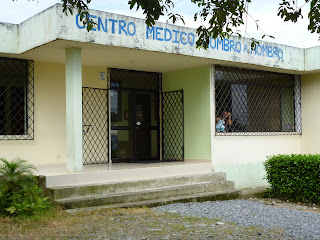The issue of contraception is very controversial and multifaceted in Ecuador:
- The vast majority of the patients served at Centro Medico Hombro a Hombro are Catholic, which is the most common religion in Ecuador. The Catholic Church is against contraception and teaches abstinence only. Thus, families in Ecuador tend to be HUGE. I met a 33 year old patient with thirteen children.
- Contraception generally requires money, which can be an issue for patients. (Although, one might argue that a child costs a whole lot more!)
- Within the past few months, the government of Ecuador has begun offering free contraception at the Centros de Salud, which is similar to the US Health Department. However, there are significant issues with the birth control services provided at the Centros de Salud. The contraception offered is IMPLANON. IMPLANON is plastic rod implant that releases progesterone hormones to prevent pregnancy for up to 3 years, shown below.
- While IMPLANON is generally regarded as safe and effective, the patients receive very little, if any, counseling on the contraception. Many patients have come to Centro Medico Hombro a Hombro very distressed because they do not understand the common side effects of the birth control. They do not understand how the contraception works and why they have bruising or a foreign object in their arm.
- Finally, machismo has a great impact on the use of contraception in Ecuador. Machismo describes a strong sense of masculine pride and power. Whenever a patient requests contraception, the physician asks if the woman has discussed the issue with her husband. The majority of the time, the patient replies that her husband does not want her to use birth control and the contraception must remain a secret.
- Apparently, the reason why many men do not want their wives to use contraception is that they believe the women want contraception because they are having or desire to have an affair.
- One question I asked was, "What happens when you do not get pregnant? Won't your husband know that you are using birth control?" All of the women have had the same reaction. They simply laugh and say that it will be fine.



























